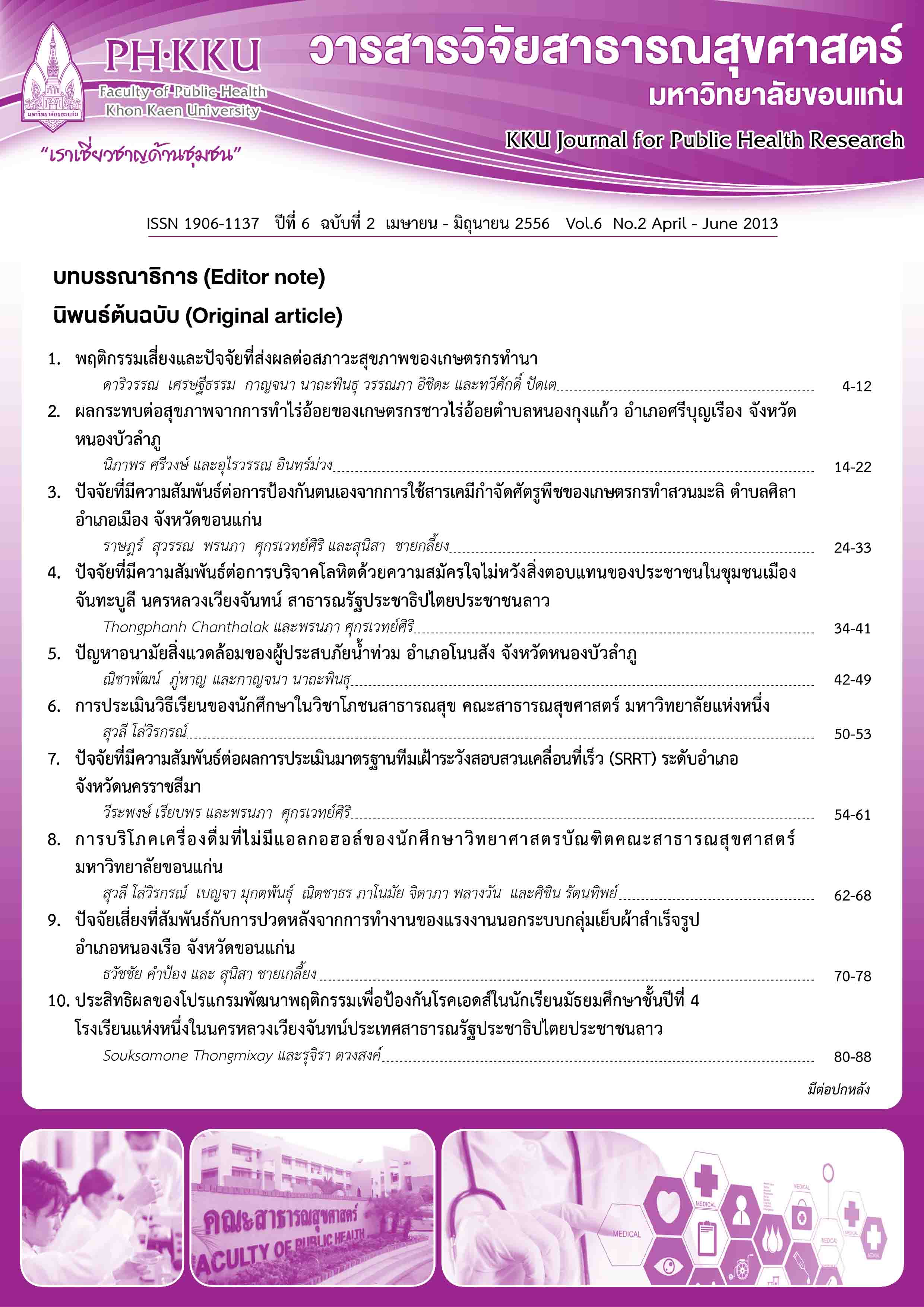Factors Associated With Voluntary Non-Remunerated Blood Donation In Residents Of Chanthabouly District, Vientiane Capital City, Lao People’s Democratic Republic
Keywords:
Blood donation, donor characteristics, donor recruitmentAbstract
This research represents an application of the PRECEDE framework model and aimed to identify factors associated with the voluntary and non-remunerated donations of
blood by the people residing in Chanthabuly District, Vientiane Capital City, Lao People’s Democratic Republic. The study used a retrospective case-control design, and the participants
were 449 blood donors (cases) and 449 non-donors (controls). Data were collected by questionnaire and analysed using the STATA V.10.1 software programme. For descriptive
statistics, percentages, frequencies, means, standard deviations, medians, and minimum/maximum values of the variables were computed. For inferential statistics, a univariate and a
multivariate analysis were conducted, and proportions were compared by using the conventional chi-square test. An unconditional multiple logistic regression with backward
selection was used to determine the adjusted odds ratios (ORadj). A p-value of <0.05 was taken as the indication of a statistically significant difference between groups.
The majority of the blood donation participants (cases) were male (57.2%), had completed high school education (61.0%), reported their occupation as ‘student’ (56.1%),
were single (72.2%), earned 200,000-600,000 kip per month (57.2%), and described themselves as Buddhists (96.9%). In the univariate analysis, the statistically significant
factors found to be positively associated with donating blood were as follows: male gender with 57.2% of cases and 43.9% of controls being male (OR=1.71; 95%CI=1.31-1.23), younger
age with 37.0% of cases and 39.4% of controls being 20-29 years of age (OR=1.48; 95%CI= 1.08-2.02), higher educational level with 35.2% of cases and 24.5% of controls having
bachelor or higher degree (OR=4.31; 95%CI=1.14-16.28), marital status with 72.2% of cases and 56.3% of controls being single (OR=2.01; 95%CI=1.52-2.65), high income with 57.2% of
cases and 44.1% of controls reporting annual incomes of 200,000-600,000 kip (OR=1.01; 95%CI=0.63-1.63), student occupational status with 56.1% of cases and 32.7% of controls
reporting themselves to be students (OR=2.65; 95%CI=1.21-5.81). The results of the multivariate analysis showed statistically significant positive associations between donating
blood and the following factors: male (ORadj=2.08; 95%CI=1.54-2.80), younger age (<30 years) (ORadj=1.71; 95%CI=1.21-2.42), better knowledge about blood donation (ORadj=2.15;
95%CI=1.55-2.98), more positive attitudes towards giving blood (ORadj=2.04; 95%CI=1.49- 2.81), easier of travel to blood donation site (ORadj=2.19; 95%CI=1.56-3.10), less cost of
travel to blood donation site (ORadj=1.67; 95%CI=1.22-2.29), and obtaining information about blood donation from television and radio (ORadj=1.65; 95%CI=1.17-2.33).
The findings indicate that to increase voluntary, non-remunerated blood donation, potential donors need easier and less costly access to blood donation facilities, and that
future blood donation campaigns should focus more on female potential donors and make more use of television and radio in the provision of information about blood donation and
its importance.


